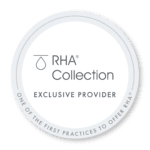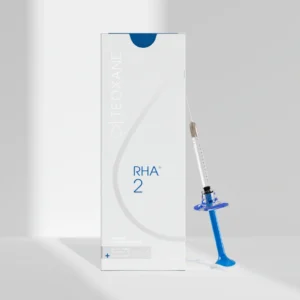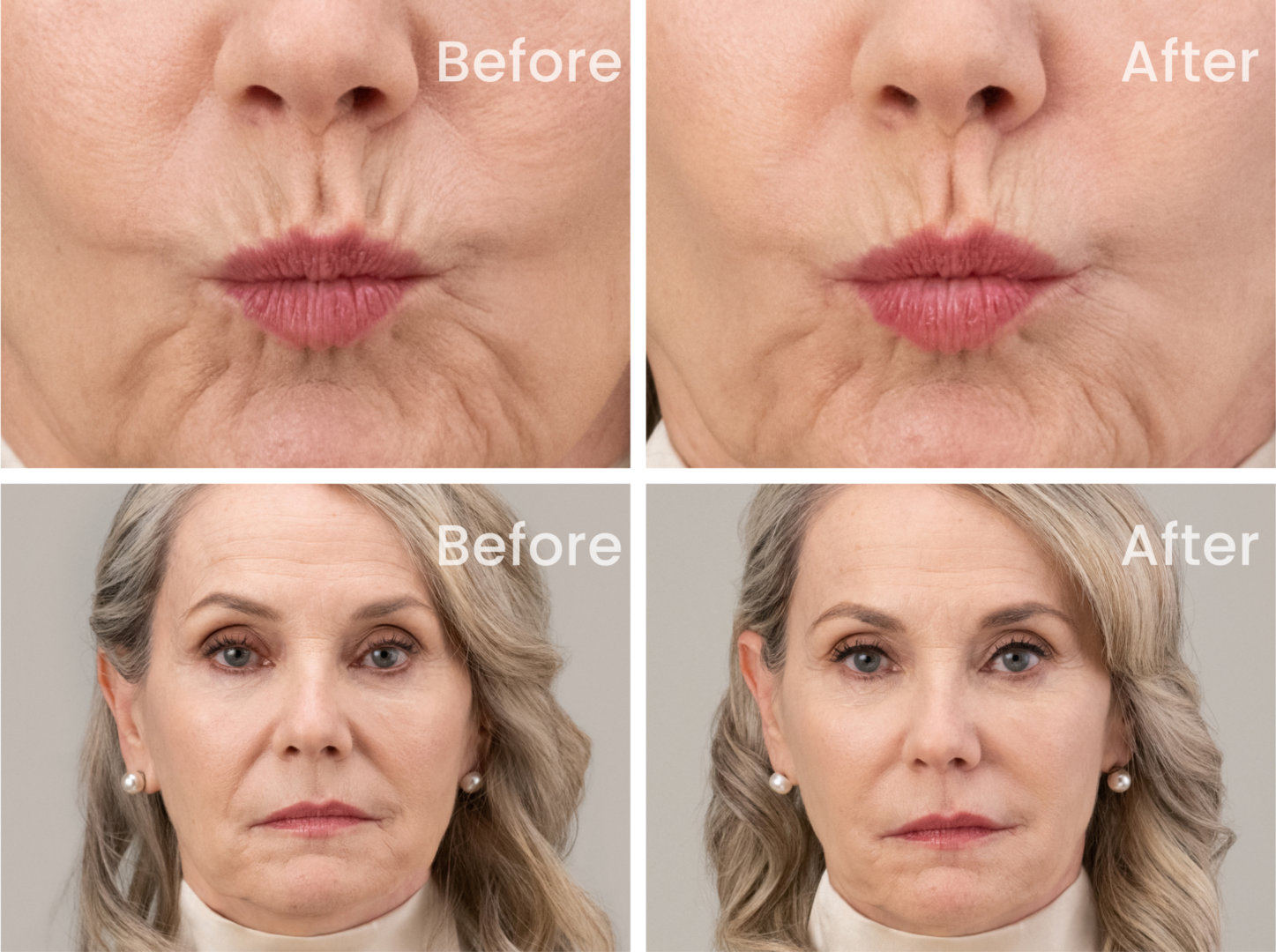DYNAMIC
Made to adapt to your dynamic facial movements for a look that’s beautiful at rest and flawless in motion.
Formulated to more closely resemble the natural hyaluronic acid (HA) in your skin.
FOUR PRODUCTS to fit every need!
Made for the finest of wrinkles and to smooth crapey skin.
This product has the most stretch and is the most pliable.
There is no other product on the market like RHA Redensity.
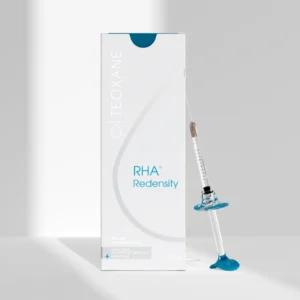
This product is great for fine lines around the mouth, has the abitilty to stretch, and can maintain its position fairly well with pressure. RHA2 is similar to Restylane Fine Lines.
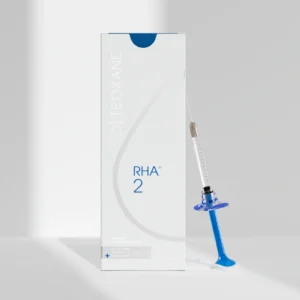
This is a great alternative to Restylane-L and Juvederm Ultra Plus. It retains its shape well, but has some pliability. RHA3 is a favorite for the treatment of smile lines (nasolabial folds), marionette lines, the lips, and under the eyes. RHA3 is a great all around hyaluronic acid filler.
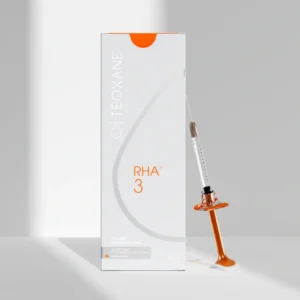
This is the densest of least pliable of the RHA collection. Its properties are similar to Juvederm Voluma and Restylane Lyft. This is a great product to add volume to the cheeks and temples with a result that can last up to 1 year.
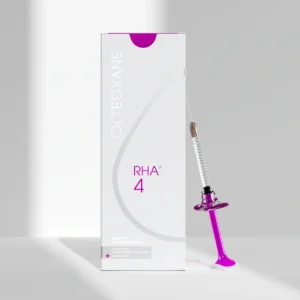
Hyaluronic Acid Fillers - The Most Commonly Used Dermal and Sub-Dermal Filler. Learn Why.
Hyaluronic acid (HA) fillers are a type of dermal filler commonly used in cosmetic procedures to restore volume, enhance facial contours, and reduce the appearance of wrinkles and fine lines. Hyaluronic acid is a naturally occurring substance found in the human body, particularly in the skin, joints, and connective tissues. It plays a vital role in maintaining hydration, elasticity, and firmness of the skin.
Here are some key points about hyaluronic acid fillers:
- Composition: Hyaluronic acid fillers are composed of a gel-like substance made from hyaluronic acid, which is typically sourced from bacteria or synthesized in a laboratory. The gel is clear, smooth, and biodegradable.
- Function: The primary function of HA fillers is to add volume and plumpness to areas of the face that have lost elasticity or have developed wrinkles. They can be used to fill in lines around the mouth (marionette lines and nasolabial folds), enhance lip volume, add definition to the cheeks, and fill in hollow areas under the eyes.
- Injection Process: HA fillers are typically injected into the desired treatment area using a fine needle or cannula. Prior to the procedure, a topical anesthetic or local anesthetic may be applied to minimize discomfort. The injections are usually done by a trained medical professional, such as a dermatologist or plastic surgeon.
- Results and Duration: The results of HA fillers are immediate, and patients can usually notice an improvement in volume and smoothness right after the procedure. However, there may be some initial swelling or redness, which typically subsides within a few days. The effects of HA fillers are not permanent and can last anywhere from several months to over a year, depending on the specific product used and individual factors.
- Safety and Side Effects: Hyaluronic acid fillers are generally considered safe when administered by a trained professional. Since hyaluronic acid is a naturally occurring substance in the body, the risk of allergic reactions is minimal. However, common side effects may include temporary redness, swelling, bruising, or tenderness at the injection site. Rare but more serious complications such as infection or vascular occlusion can occur, but they are uncommon when proper injection techniques are employed.
- Maintenance and Repeated Treatments: To maintain the desired results, follow-up treatments may be necessary. Over time, the hyaluronic acid in the filler is gradually broken down and absorbed by the body. Your healthcare provider can recommend a treatment plan based on your individual needs and goals.
Dr. Bader always schedules a consultation with his patients to determine if one is a suitable candidate for treatment and will provide personalized advice based on your specific concerns and medical history. Often, but not always, hyaluronic acid filler treatments are combined with other treatments to achieve optimal results.
What areas can be treated with RHA hyaluronic acid filler?
Hyaluronic acid fillers can be used to treat various areas of the face. Some common treatment areas include:
- Nasolabial Folds ("Smile Lines"): These are the lines that extend from the sides of the nose to the corners of the mouth. Hyaluronic acid fillers can be used to soften these lines and restore volume in the area.
- Marionette Lines ("Puppet's Lines"): These lines run vertically from the corners of the mouth down to the chin. Fillers can help minimize the appearance of these lines and provide a more youthful appearance.
- Lips: Hyaluronic acid fillers can be used to enhance the volume, shape, and definition of the lips. They can add fullness to thin lips or improve the symmetry and balance of the lips.
- Cheeks: Fillers can be used to add volume and contour the cheeks, providing a lifted and more youthful appearance.
- Under-Eye Area: Hyaluronic acid fillers can help address hollow or sunken areas under the eyes, commonly known as tear troughs. They can improve the appearance of dark circles and reduce the sunken look.
- Jawline and Chin: Fillers can be used to enhance the definition and contour of the jawline and chin, creating a more defined and sculpted appearance.
- Temples: As we age, the temples can lose volume and become hollow. Hyaluronic acid fillers can be used to restore volume in this area, creating a smoother and more youthful contour.
- Nose (Non-surgical Rhinoplasty): Hyaluronic acid fillers can be used to reshape and contour the nose without the need for surgery. They can be used to smooth out bumps, correct minor asymmetries, or add volume to specific areas of the nose.
It's important to note that the use of hyaluronic acid fillers in specific areas may vary depending on individual needs, facial anatomy, and the expertise of the healthcare provider. Consulting with a qualified professional is essential to determine the most suitable treatment plan for your specific goals and concerns.

